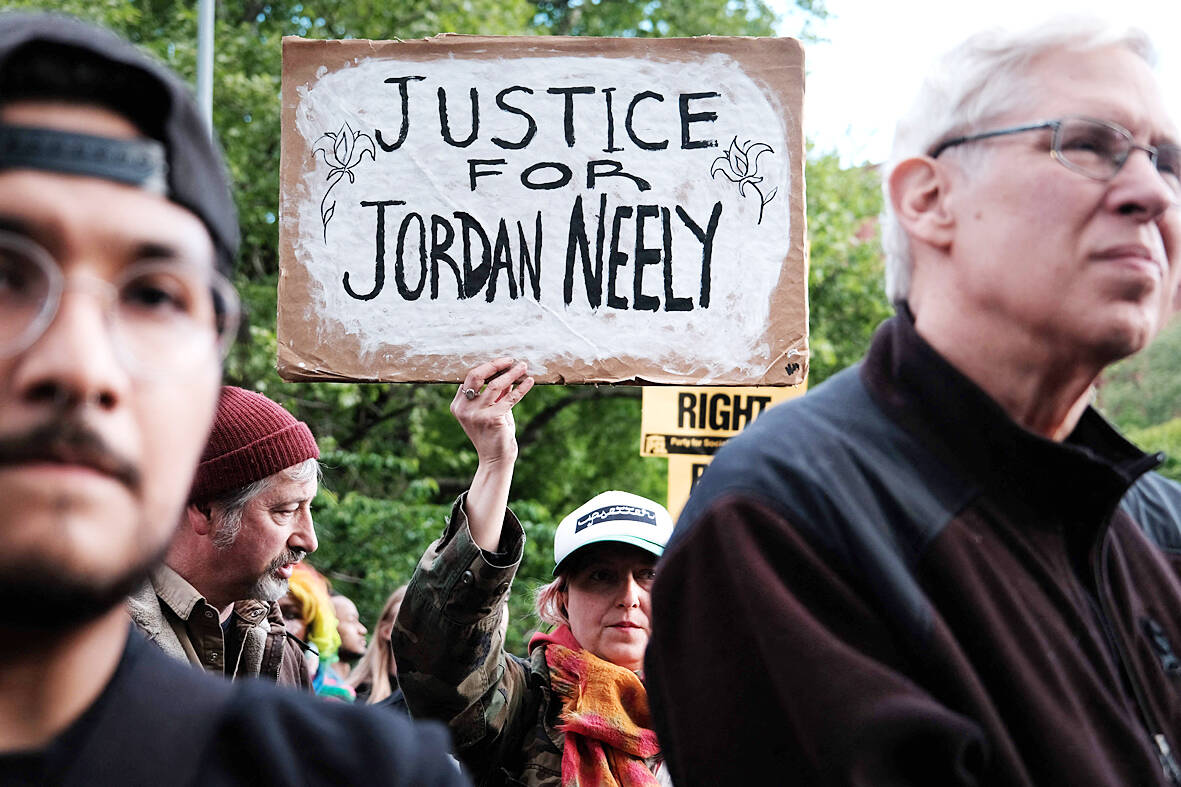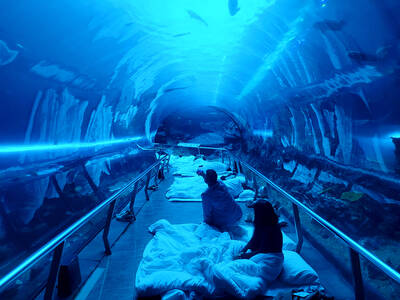If there’s one thing we should all be able to agree on, it’s that all human beings belong to the same species, Homo sapiens.
But a new study published in the Proceedings of the National Academy of Sciences (PNAS) on Monday has found a yawning gap between what people claim to believe and what they actually hold true.
A team from Harvard and Tufts gathered data from more than 60,000 subjects who took part in 13 experiments that tested their implicit biases.

Photo: AFP
An overwhelming majority — over 90 percent — explicitly stated that white people and non-white people are equally human.
But on an implicit measure, white US participants, as well as white participants from other countries, consistently associated the attribute “human” (as opposed to “animal”) with their own group more than other racial groups. Conversely, Black, Asian and Hispanic participants showed no such bias, equally associating their own group and white people with “human.”
“The biggest takeaway for me is that we’re still grappling in a new form with sentiments that have been around for centuries,” said first author Kirsten Morehouse, a PhD student at Harvard University.
Throughout history, the dehumanization of other races has been used as a pretext for unequal treatment, ranging from police brutality all the way to genocide.
IMPLICIT ASSOCIATION TEST
The research relied on the Implicit Association Test (IAT), a tool developed in the 1990s and now widely used in the field.
A computer-based measure, it tests the strength of associations between two concepts — for example Black and white people or gay and straight people — and two attributes like good or bad.
The idea is that easier pairings, as measured by faster key responses, are more strongly associated in the mind than difficult pairings, as measured by slower responses.
Researchers believe IAT tests reveal attitudes that people would be unwilling to state publicly, or might not even be aware of on a conscious level. Across all the experiments, 61 percent of white participants associated white people more with “human” and Black people more with “animal.”
An even greater number — 69 percent of white participants — associated white participants more with humans and Asians more with animals, and the same result occurred for white people taking a white-Hispanic test.
These effects held true across age, religion and education of participants, but did vary by political affiliation and gender. Self-identified conservatives and men expressed slightly stronger implicit “human = white” associations.
Non-white people did not show an implicit bias in favor of their own racial groups compared to white people.
But they did show a bias towards whites as more human when the test was between white people and another minority group, for example Asians asked to take a test that assessed their attitudes towards white people versus Black people.
SOCIAL HIERARCHY
Morehouse attributed these findings to the fact that white people are socially and economically dominant in the US, where 85 percent of the participants were from (8.5 percent were from Western Europe).
She theorized that while you might expect all races to be more biased in favor of their own “in-group,” such sentiments might be canceled out by their lower standing in American society, resulting in overall neutrality.
The fact that “third party” participants were biased in favor of white people when assessed against another race “demonstrates how powerful these social hierarchies are,” she said. Similar tests to those used in the experiment are available to take at: implicit.harvard.edu.
Morehouse said that while the results could be uncomfortable for some, awareness was a first step that could help individuals break patterns of stereotyping.

We lay transfixed under our blankets as the silhouettes of manta rays temporarily eclipsed the moon above us, and flickers of shadow at our feet revealed smaller fish darting in and out of the shelter of the sunken ship. Unwilling to close our eyes against this magnificent spectacle, we continued to watch, oohing and aahing, until the darkness and the exhaustion of the day’s events finally caught up with us and we fell into a deep slumber. Falling asleep under 1.5 million gallons of seawater in relative comfort was undoubtedly the highlight of the weekend, but the rest of the tour

Youngdoung Tenzin is living history of modern Tibet. The Chinese government on Dec. 22 last year sanctioned him along with 19 other Canadians who were associated with the Canada Tibet Committee and the Uighur Rights Advocacy Project. A former political chair of the Canadian Tibetan Association of Ontario and community outreach manager for the Canada Tibet Committee, he is now a lecturer and researcher in Environmental Chemistry at the University of Toronto. “I was born into a nomadic Tibetan family in Tibet,” he says. “I came to India in 1999, when I was 11. I even met [His Holiness] the 14th the Dalai

Following the rollercoaster ride of 2025, next year is already shaping up to be dramatic. The ongoing constitutional crises and the nine-in-one local elections are already dominating the landscape. The constitutional crises are the ones to lose sleep over. Though much business is still being conducted, crucial items such as next year’s budget, civil servant pensions and the proposed eight-year NT$1.25 trillion (approx US$40 billion) special defense budget are still being contested. There are, however, two glimmers of hope. One is that the legally contested move by five of the eight grand justices on the Constitutional Court’s ad hoc move

Stepping off the busy through-road at Yongan Market Station, lights flashing, horns honking, I turn down a small side street and into the warm embrace of my favorite hole-in-the-wall gem, the Hoi An Banh Mi shop (越南會安麵包), red flags and yellow lanterns waving outside. “Little sister, we were wondering where you’ve been, we haven’t seen you in ages!” the owners call out with a smile. It’s been seven days. The restaurant is run by Huang Jin-chuan (黃錦泉), who is married to a local, and her little sister Eva, who helps out on weekends, having also moved to New Taipei